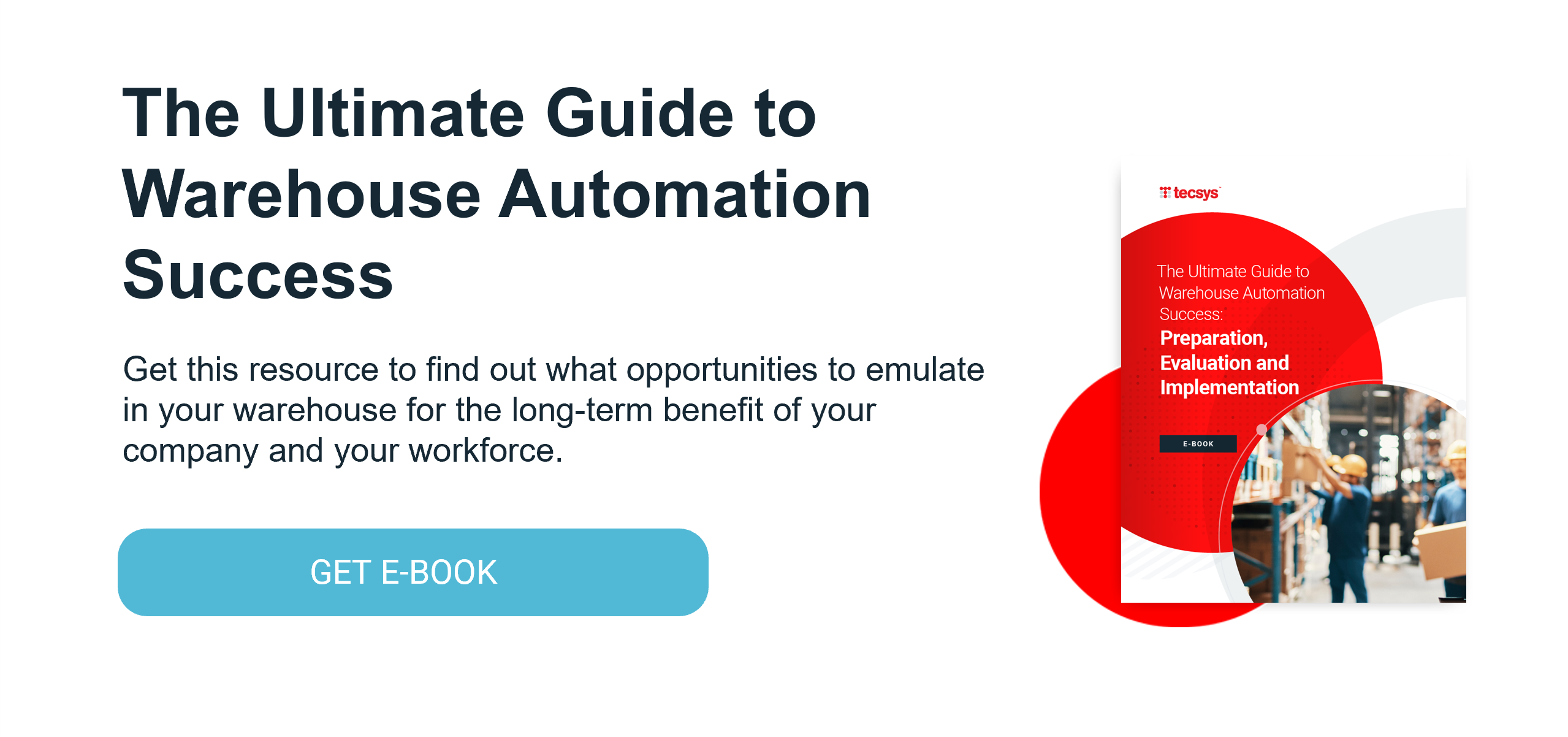How to Set Up a Warehouse Management System for Automation

Many organizations are beginning their journey to automate their warehouse. One major factor that has contributed to warehouse automation adoption is labor shortages, which is projected to continue for the foreseeable future. But for most warehouse managers, the labor force is one element of your operational success. The second critical element is the warehouse management system (WMS). Therefore, while the prospect of implementing automation to solve your labor challenges is important, you also need to consider how to set up your warehouse management system for automation.
Here are three key factors to keep in mind when reconfiguring your warehouse management system to be automation ready.
How to Set Up a Warehouse Management System for Automation
1. Integration
You will first need to determine what level your WMS integrates into the selected automation system. This integration will define how well the two technologies will work in concert. There are two overall approaches, the black box and the WMS directed.
In the black box integration approach, the WMS sends the orders into the automation system and receives the notification of activity back from the automation system. These means the details around scheduling and workflow are all handled by the automation software. The black box integration passes all control over to the automation system.
As for the WMS-directed integration approach, the WMS knows where and how all the material is stored and issues individual activity to the automation system at the task level. While this approach requires a lot of effort to integrate, it allows the automation system to be far more integrated into the core functioning of the warehouse.
So which approach is right for your warehouse? If you have a highly dynamic warehouse where orders and plans change constantly or where only a small part of the warehouse is being managed by the automation, you might want to consider the WMS-directed integration approach. If your warehouse automation is more self-contained then the black box integration approach might be less work, but still effective.
2. Replenishment
It’s likely your warehouse is looking at automation to increase the pick rate. Therefore, the next thing you need to determine when figuring out how to set up a warehouse management system for automation is getting items restocked in an efficient and proactive way. The fact of the matter is you can’t increase your pace of fulfillment without increasing your pace of replenishment. It is essential to consider when and who will be managing the replenishment and how often the automated areas will require replenishment. Determine if your WMS can replenish based upon planned activity and if it can optimize the replenishments based upon priority and need? Remember that adding storage capacity to the automation to lessen the number of times you need to replenish any one item can often come at a huge premium cost.
3. Non-Conveyable Items
The third important thing to consider when determining how to set up a warehouse management system for automation is non-conveyable items. Most warehouses have a mix of items and some simply don’t work with automation — too big, too heavy, too breakable, etc. By having a mixture of these types of items in your warehouse means you will need an effective plan on how to split orders into automated items vs. non-conveyable items (or items stored outside the automation) and then marry them back up at the end of the picking process. This plan needs to consider the expected increase in speed driven by the successful implementation of the automation project. The WMS will need to allow zone picking logic which allows you to complete part of the order from the automation (via integration) and part of the order manually via picking off the WMS. This requires a very ‘automation friendly’ WMS and a preconfigured automation zone that is picked from the automation integration.
Ensure Your Warehouse Automation Project Success
I realize that these three factors are not showstoppers when it comes to implementing warehouse automation, but these are things you must carefully consider as it may drive a redesign of the core warehouse workflow or even the layout of the warehouse floor. It’s important to have a thorough project plan in place before moving forward with your automation project. You need to understand all the potential implications and how you will set up your warehouse management system with your new automation system to ensure everything integrates effectively into your existing processes and workflows. Like any major change management initiative, an effective plan can make the difference between implementation success or failure.




